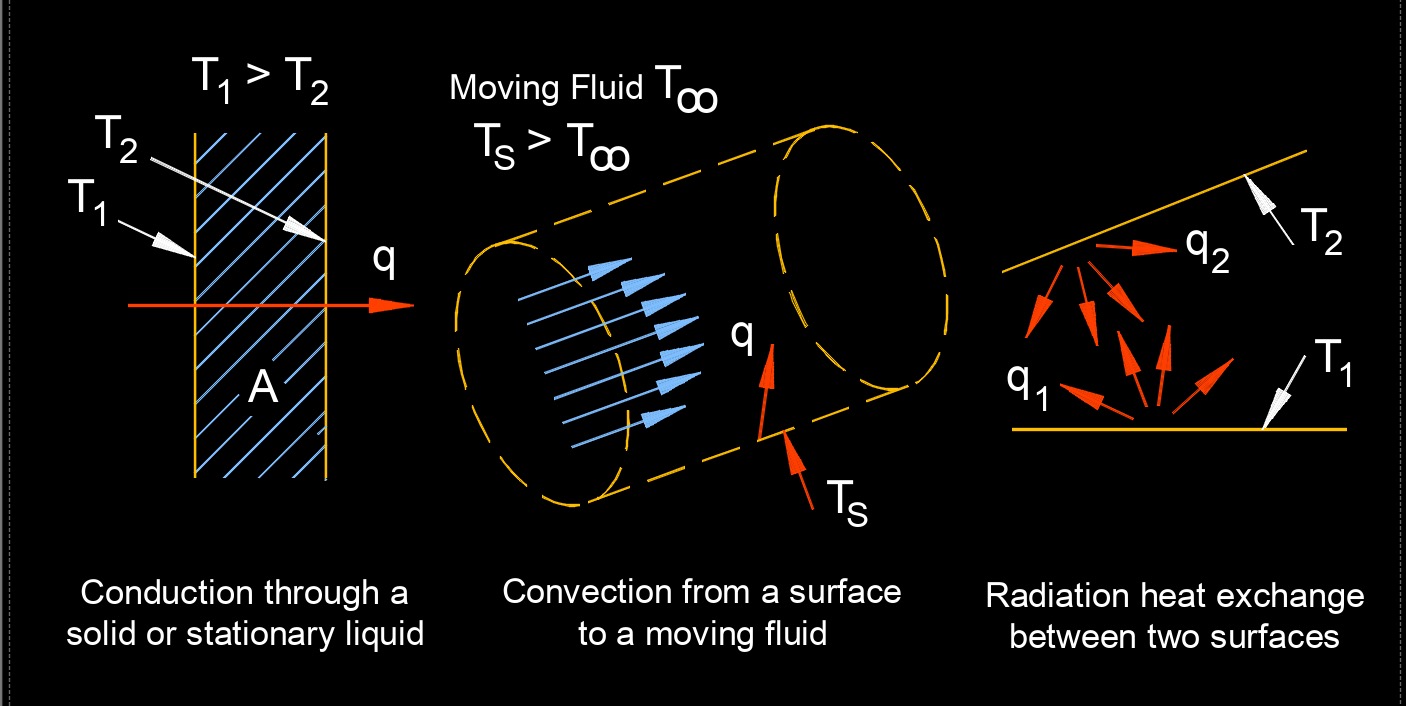Heat Flux
Heat Flux Formula |
||
|
\( Q" \;=\; \dfrac{ Q_f }{ A }\) (Heat Flux) \( Q_f \;=\; Q" \cdot A \) \( A \;=\; \dfrac{ Q_f }{ Q" }\) |
||
| Symbol | English | Metric |
| \(\large{ Q" }\) = Heat Flux | \(Btu\;/\;hr-ft^2\) | \(W\;/\;m^2\) |
| \(\large{ Q_f }\) = Heat Flow Rate | \(Btu\;/\;hr\) | \(W\) |
| \(\large{ A }\) = Area | \(ft^2\) | \(m^2\) |
Heat flux, abbreviated as Q", also called thermal flux, is the heat flow rate transfer through a given surface, per unit surface. It represents the amount of heat energy flowing through a specific area in a given time. Heat flux is a vector quantity, meaning it has both magnitude and direction.

Heat flux can be either convective or conductive, depending on the mode of heat transfer. In convective heat transfer, heat is transferred between a solid surface and a moving fluid (liquid or gas) through convection. In conductive heat transfer, heat is transferred through a solid material by conduction.
Heat flux plays a crucial role in various fields, including heat transfer analysis, engineering design, and thermal management. It is used to determine the heat transfer rates in systems, evaluate the performance of heat exchangers, calculate thermal gradients across surfaces, and assess the heat dissipation capabilities of materials and devices. Measuring and controlling heat flux is important for optimizing thermal processes, ensuring the efficiency of heat transfer systems, and preventing overheating or damage to components.

